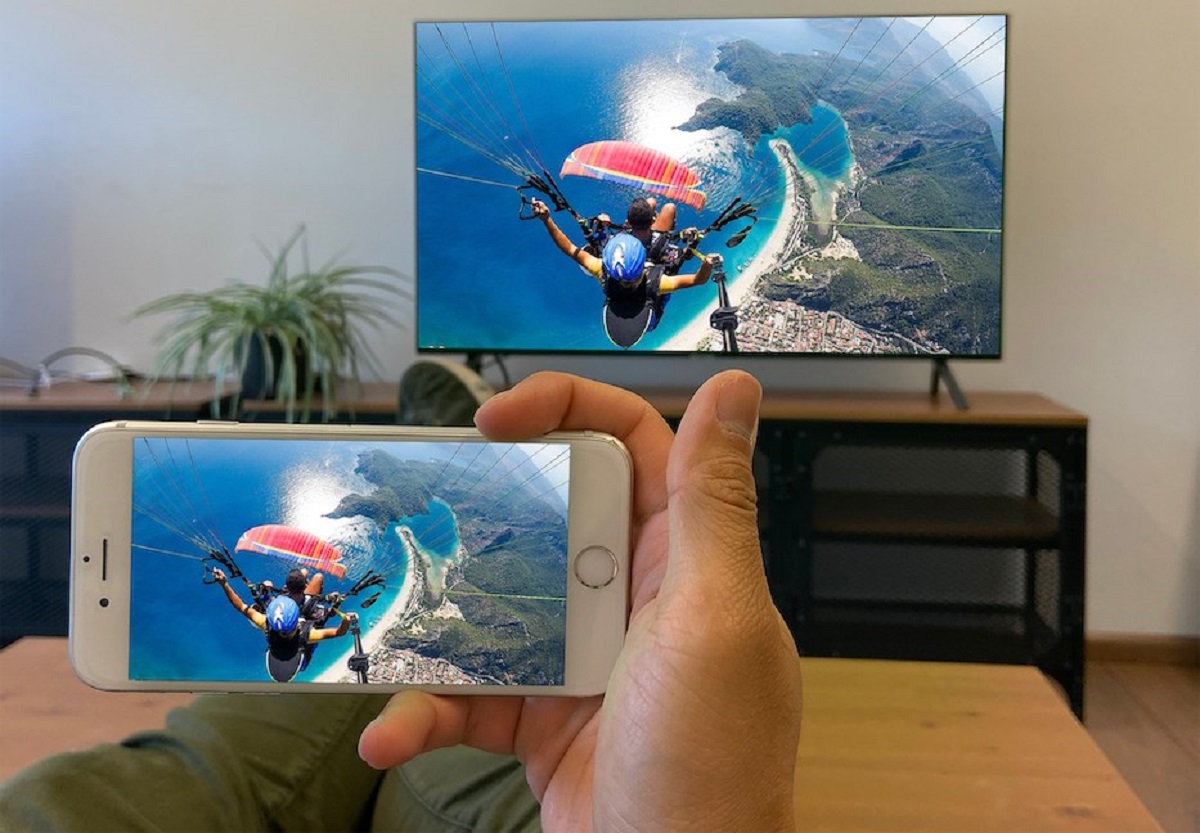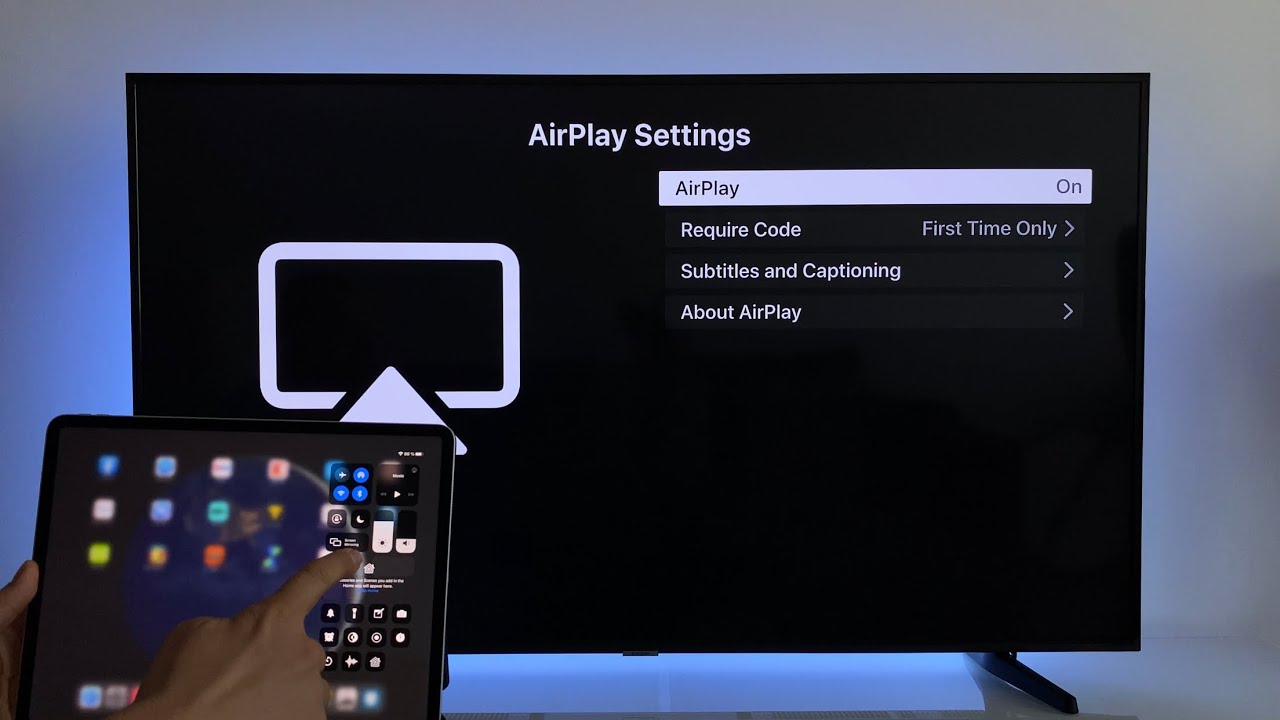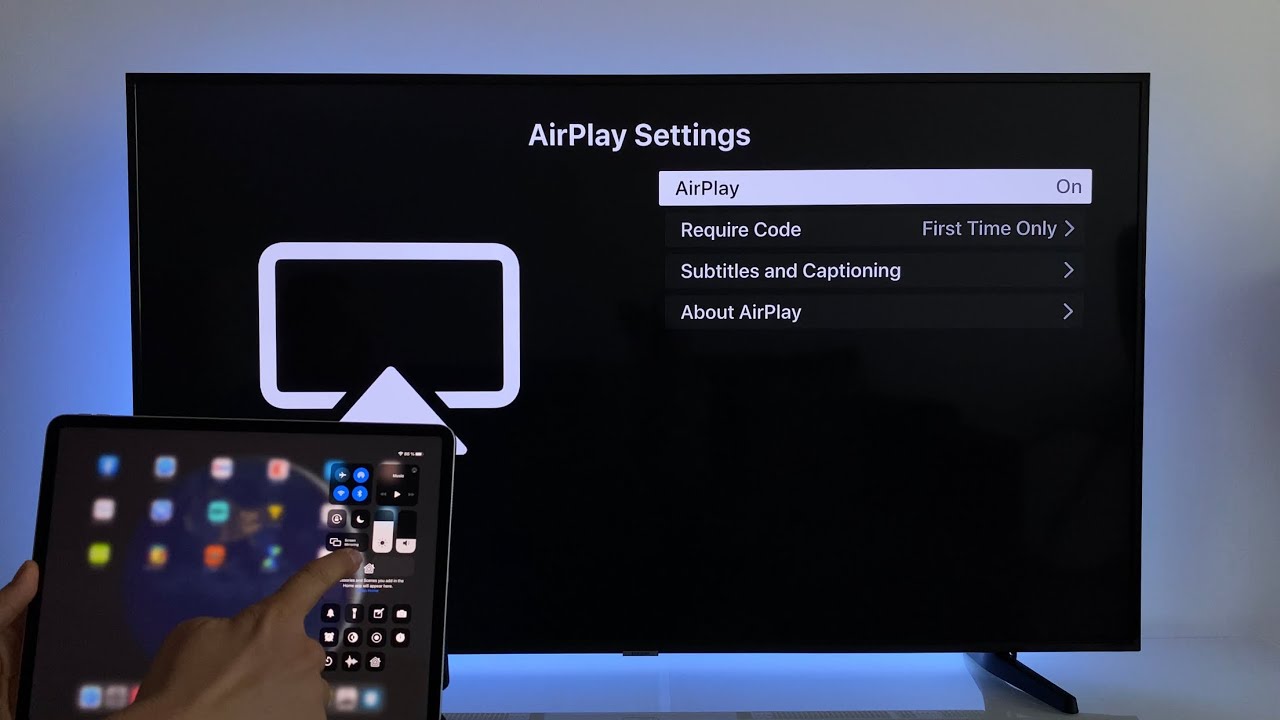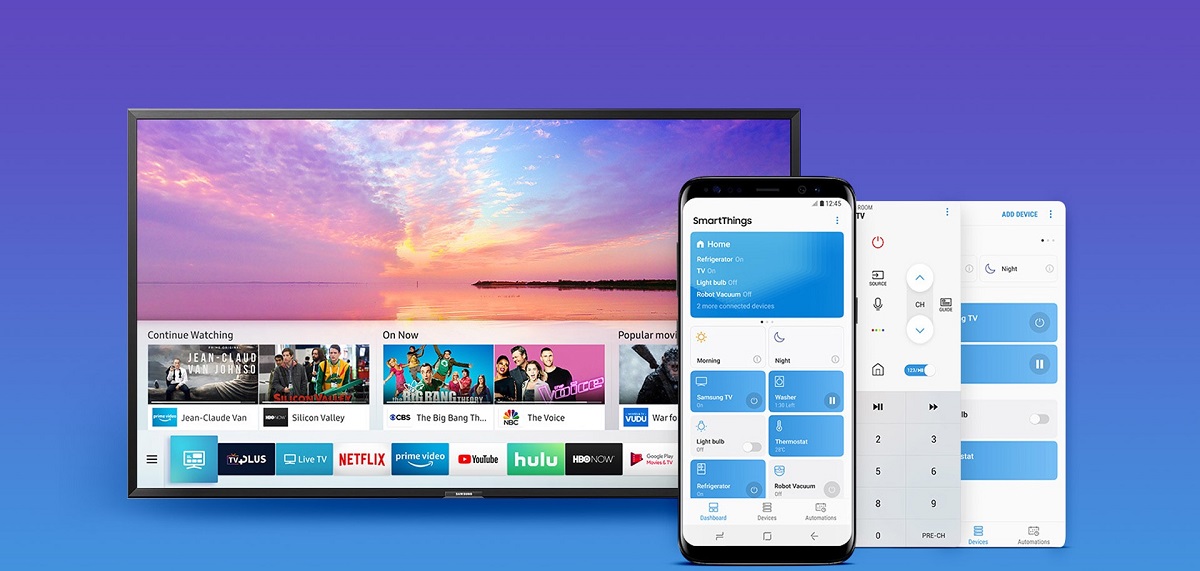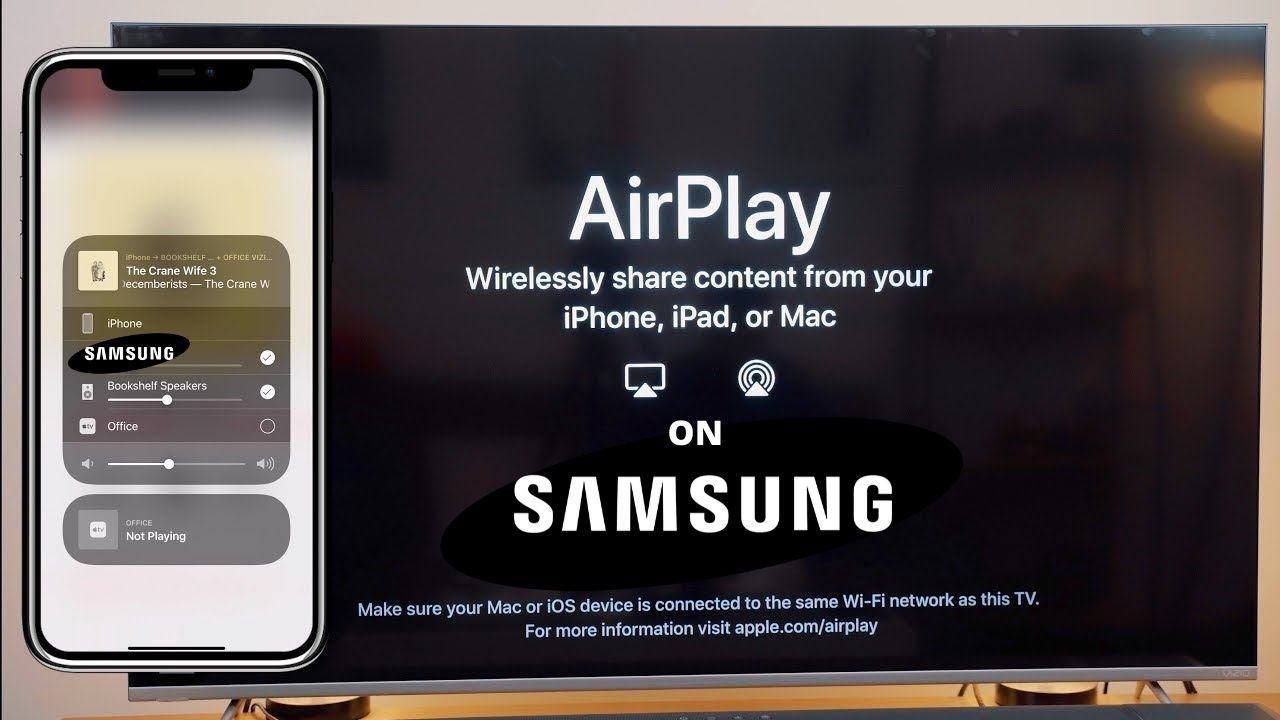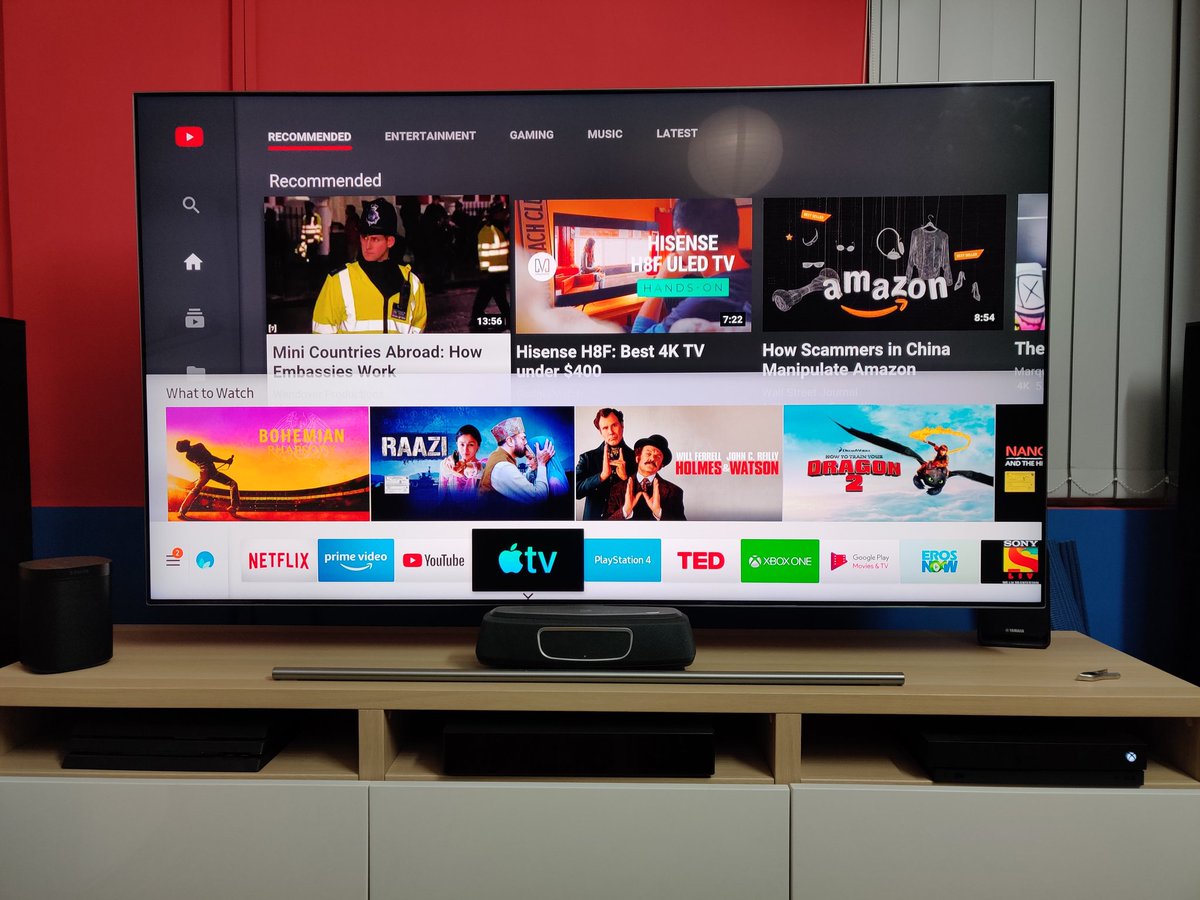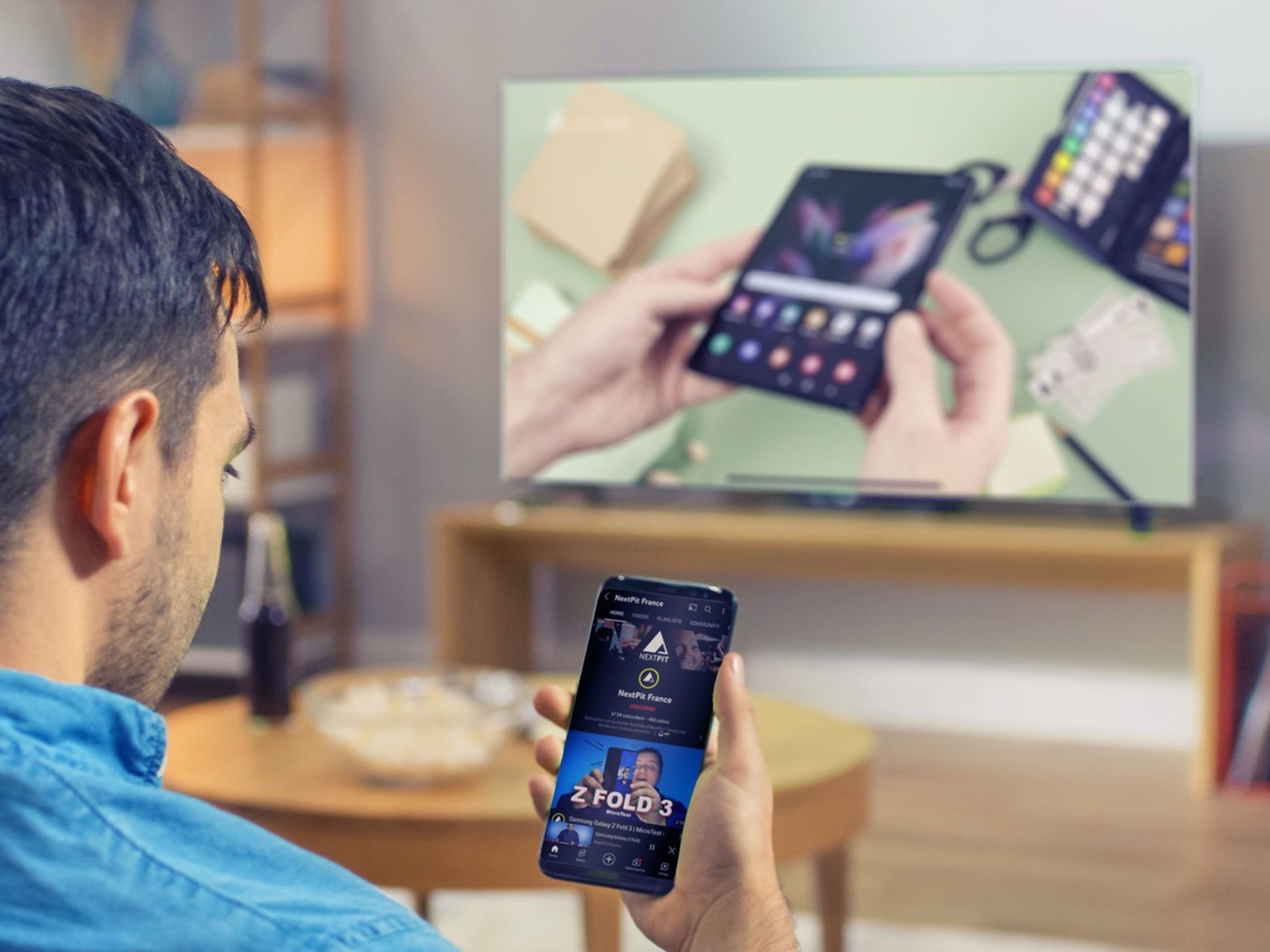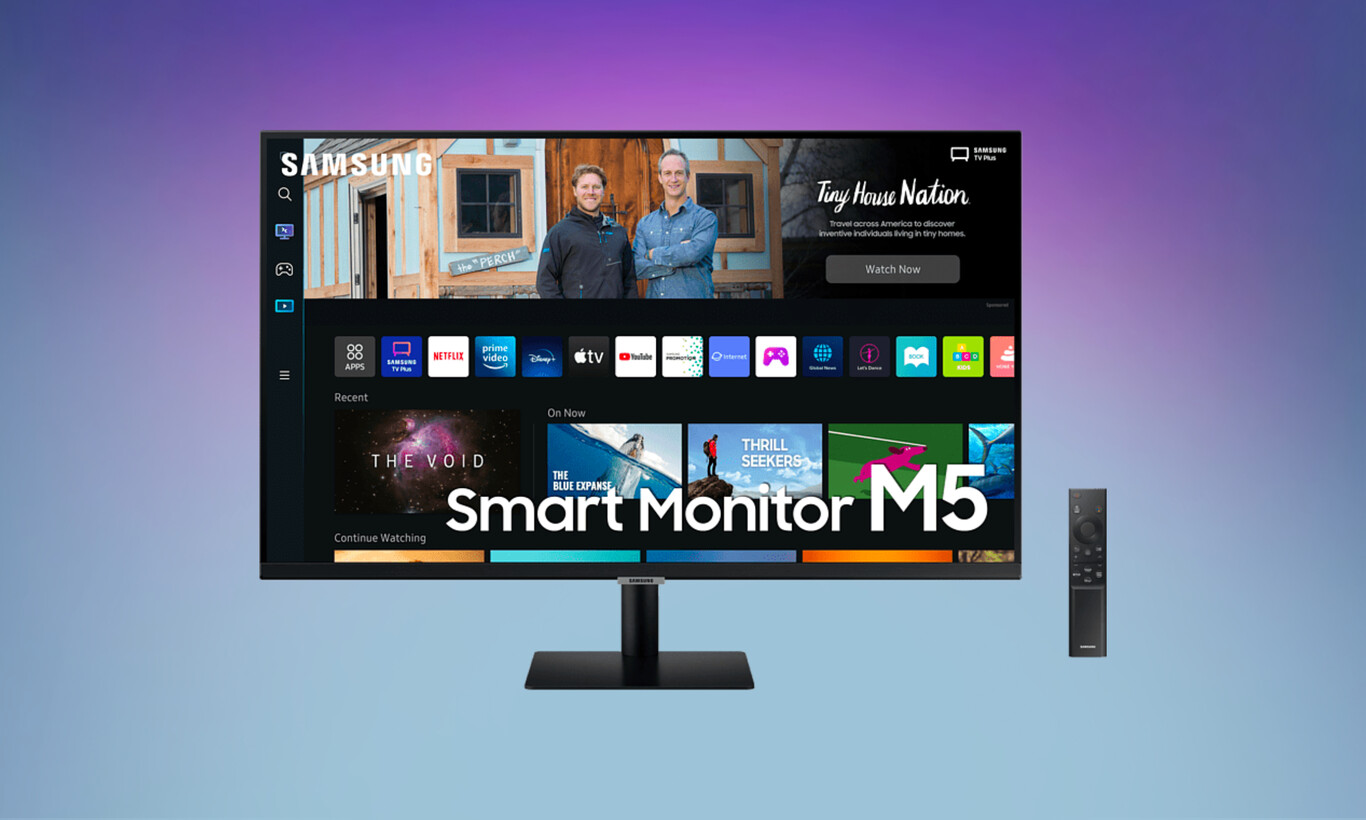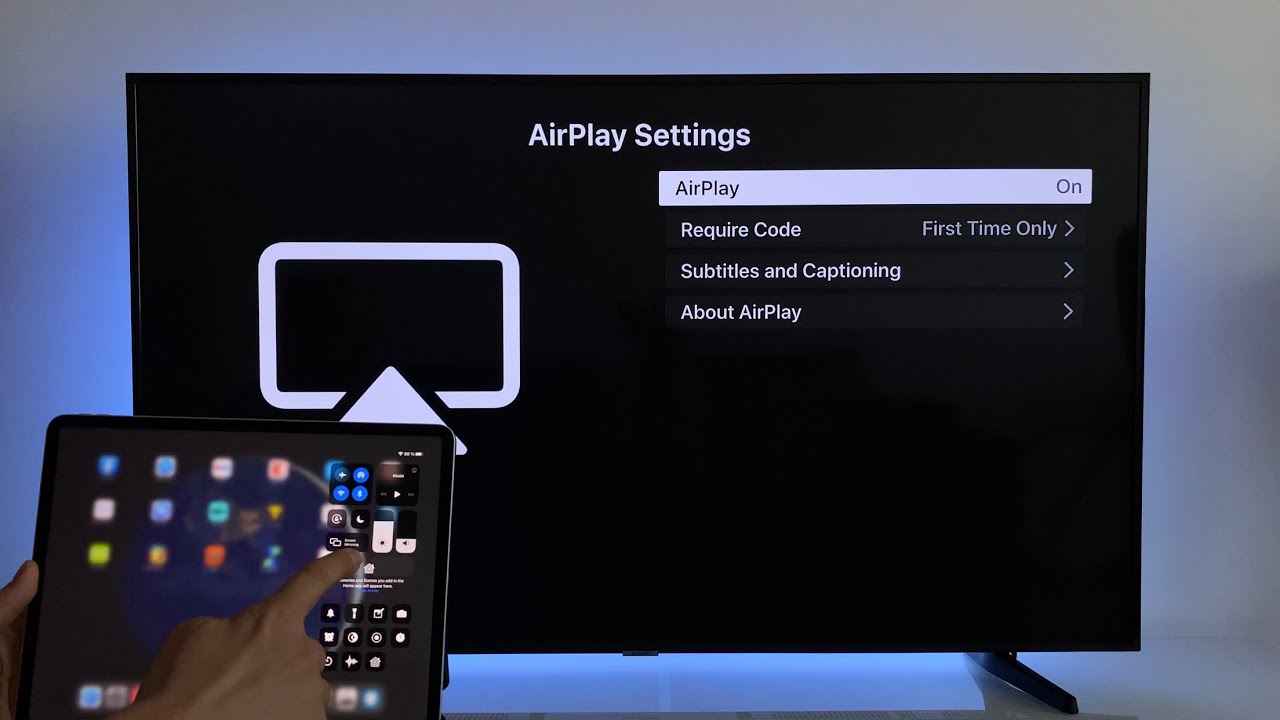Introduction
Welcome to our guide on how to connect your Apple phone to a Samsung Smart TV! With the advancement of technology, it is now easier than ever to enjoy your favorite content on the big screen. Whether you want to stream movies, share photos, or play games, connecting your Apple phone to your Samsung Smart TV opens up a world of possibilities.
Many people assume that because they own different brands of devices, the connection process might be complicated or even impossible. However, you will be pleasantly surprised to find out that connecting your Apple phone to a Samsung Smart TV is actually quite straightforward. In this guide, we will take you through the different methods you can use to achieve this connection, regardless of whether your Apple phone is an iPhone or an iPad.
Before we proceed, it is important to note that the methods outlined in this guide may vary depending on the model of your Samsung Smart TV and the iOS version running on your Apple phone. However, the fundamental principles remain the same, and we will cover the most commonly used methods that work across various devices.
So, if you’re ready to enhance your viewing experience and bring your favorite content to the big screen, let’s dive into the step-by-step process of connecting your Apple phone to a Samsung Smart TV.
Step 1: Check for Compatibility
Before we dive into the different methods of connecting your Apple phone to a Samsung Smart TV, it’s crucial to ensure that your devices are compatible. While most modern Apple phones and Samsung Smart TVs are designed to work seamlessly together, it’s always a good idea to double-check.
The first thing you need to verify is that both your Apple phone and Samsung Smart TV support the required connectivity features. For Apple phones, make sure it has the AirPlay feature, which allows you to wirelessly stream content to your TV. On the other hand, check if your Samsung Smart TV supports AirPlay 2, which is the latest version of Apple’s wireless streaming protocol.
Next, ensure that both devices are connected to the same Wi-Fi network. This is crucial as it allows them to communicate with each other. If your Apple phone and Samsung Smart TV are not on the same network, you will not be able to establish a connection.
Lastly, it’s important to have the latest software updates installed on both devices. Software updates often include bug fixes, security patches, and new features that can improve the compatibility between your Apple phone and Samsung Smart TV. To check for updates, simply go to the Settings app on your Apple phone and the Settings menu on your Samsung Smart TV.
By confirming the compatibility of your devices and ensuring they meet the necessary requirements, you can proceed confidently to the next steps of connecting your Apple phone to a Samsung Smart TV.
Step 2: Connect using AirPlay
If you have confirmed that your Apple phone and Samsung Smart TV support AirPlay, you’re in luck. AirPlay is a built-in feature on Apple devices that allows you to wirelessly stream content from your phone to your TV. Here’s how you can connect using AirPlay:
- Ensure that your Apple phone and Samsung Smart TV are connected to the same Wi-Fi network.
- On your Apple phone, swipe down from the top-right corner of the screen to open the Control Center.
- Tap the “Screen Mirroring” or “AirPlay” option to view the list of available devices.
- Select your Samsung Smart TV from the list of available devices.
- If prompted, enter the AirPlay passcode that appears on your Samsung Smart TV.
- Once connected, you can now start streaming content from your Apple phone to your Samsung Smart TV.
With AirPlay, you can not only mirror the screen of your Apple phone but also stream specific apps or media content directly to your Samsung Smart TV. This means you can watch videos, view photos, play games, or even listen to music on the big screen for a more immersive experience.
It’s important to note that some apps may have limitations when it comes to AirPlay. These limitations can vary depending on the app or content provider. For example, some apps may restrict AirPlay for copyright or licensing reasons. However, most popular apps like YouTube, Netflix, and Apple’s own apps fully support AirPlay.
Now that you know how to connect using AirPlay, you can enjoy the convenience of streaming content from your Apple phone to your Samsung Smart TV with just a few taps!
Step 3: Connect using HDMI cable
If your Apple phone or Samsung Smart TV doesn’t support AirPlay or if you prefer a wired connection, you can still connect your devices using an HDMI cable. Here’s how:
- Check if your Apple phone has a Lightning port or USB-C port.
- Purchase an HDMI adapter that is compatible with your Apple phone’s port. For Lightning port, you will need a Lightning to HDMI adapter, and for USB-C port, you will need a USB-C to HDMI adapter.
- Connect one end of the HDMI cable to the HDMI port on the adapter.
- Connect the other end of the HDMI cable to an available HDMI input on your Samsung Smart TV.
- Plug the adapter into the Lightning or USB-C port of your Apple phone.
- On your Samsung Smart TV, use the remote control to select the HDMI input where you connected the cable.
Once the connection is established, your Apple phone’s screen will be mirrored on your Samsung Smart TV, allowing you to view and interact with your phone’s content on the big screen.
The advantage of using an HDMI cable is that it provides a stable and reliable connection, ensuring minimal lag and optimal video and audio quality. It also eliminates the need for a Wi-Fi network, making it a great option when you’re on the go or in an area with a weak Wi-Fi signal.
Keep in mind that certain apps or content may have restrictions when using an HDMI connection. Some apps may prevent video playback on external displays for copyright or licensing reasons. However, most apps that allow screen mirroring or external display support will work seamlessly with the HDMI connection.
By following these steps, you can enjoy a seamless and high-quality connection between your Apple phone and Samsung Smart TV using an HDMI cable.
Step 4: Connect using a media streaming device
If you’re looking for another option to connect your Apple phone to a Samsung Smart TV, you can consider using a media streaming device. Media streaming devices, such as Apple TV or Roku, act as intermediaries, allowing you to stream content from your Apple phone to your Samsung Smart TV. Here’s how you can connect using a media streaming device:
- Connect your media streaming device (e.g., Apple TV) to an available HDMI port on your Samsung Smart TV.
- Ensure that both your media streaming device and your Apple phone are connected to the same Wi-Fi network.
- Follow the setup instructions for your media streaming device to connect it to your Wi-Fi network and sign in to your Apple account, if required.
- On your Apple phone, open the respective app store for your media streaming device (e.g., the App Store for Apple TV) and download the corresponding app.
- Launch the app on your Apple phone and sign in to your account, if required.
- Within the app, look for the screen mirroring or casting option and select your Samsung Smart TV from the list of available devices.
- Once connected, you can now stream content from your Apple phone to your Samsung Smart TV through the media streaming device.
The media streaming device acts as a bridge between your Apple phone and Samsung Smart TV, allowing you to easily navigate and control your streaming experience. You can enjoy a wide range of apps, games, and media content available on your Apple phone, all on the larger screen of your Samsung Smart TV.
It’s worth noting that media streaming devices may offer additional features beyond screen mirroring. For example, Apple TV allows you to access and download apps directly on your TV, while some Roku devices support voice search and control.
By utilizing a media streaming device, you can take advantage of the dedicated functionalities offered by the device and enjoy a seamless streaming experience from your Apple phone to your Samsung Smart TV.
Step 5: Troubleshooting Common Issues
While connecting your Apple phone to a Samsung Smart TV is generally a simple process, you may encounter some common issues along the way. Here are a few troubleshooting steps to help you resolve these issues:
1. Weak Wi-Fi signal: If you are experiencing connectivity issues, ensure that both your Apple phone and Samsung Smart TV have a strong Wi-Fi signal. You can try moving closer to the Wi-Fi router or consider using a Wi-Fi range extender to improve the signal strength.
2. Update software: Make sure that both your Apple phone and Samsung Smart TV have the latest software updates installed. Software updates often include bug fixes and performance improvements that can resolve connectivity issues.
3. Restart devices: Sometimes, a simple restart can fix connection problems. Restart both your Apple phone and Samsung Smart TV by powering them off and then turning them back on again.
4. Check cables and connections: If you are using an HDMI cable or a media streaming device, make sure that the cables are securely connected to the appropriate ports. Additionally, check that you have selected the correct input on your Samsung Smart TV.
5. Disable VPN or firewall: If you have a VPN or firewall enabled on either your Apple phone or Samsung Smart TV, try disabling them temporarily. VPNs and firewalls can sometimes interfere with the connection process.
6. Reset network settings: If all else fails, you can try resetting the network settings on both your Apple phone and Samsung Smart TV. This will revert the network settings back to their default configurations and may help resolve any network-related issues.
If you have followed these troubleshooting steps and are still unable to connect your Apple phone to your Samsung Smart TV, it is recommended to consult the user manuals or support resources provided by the manufacturers. They may have specific instructions or additional troubleshooting steps for your particular devices.
Remember, each device and software version may have its unique challenges, so be patient and persistent in troubleshooting. With some effort, you will likely be able to overcome any connectivity issues and enjoy the seamless connection between your Apple phone and Samsung Smart TV.
Conclusion
Connecting your Apple phone to a Samsung Smart TV opens up a world of possibilities for enjoying your favorite content on the big screen. Whether you choose to use AirPlay, an HDMI cable, or a media streaming device, each method provides a convenient and immersive viewing experience.
By checking for compatibility, ensuring both devices are connected to the same Wi-Fi network, and updating software, you can establish a seamless connection between your Apple phone and Samsung Smart TV. Remember to troubleshoot common issues that may arise along the way, such as weak Wi-Fi signals or incorrect cable connections.
With AirPlay, you can wirelessly stream content from your Apple phone to your Samsung Smart TV, while an HDMI cable provides a stable and reliable wired connection. Additionally, using a media streaming device offers added functionalities and options for a seamless streaming experience.
It’s important to note that the specific steps and features may vary depending on the model and software version of your Apple phone and Samsung Smart TV. Therefore, it’s always recommended to consult the user manuals or support resources provided by the manufacturers for the most accurate and up-to-date instructions.
Now that you have learned how to connect your Apple phone to a Samsung Smart TV, it’s time to enhance your viewing experience. Start streaming your favorite movies, sharing photos, playing games, and enjoying various apps on the big screen. Embrace the possibilities and make the most out of your Apple phone and Samsung Smart TV connection.







